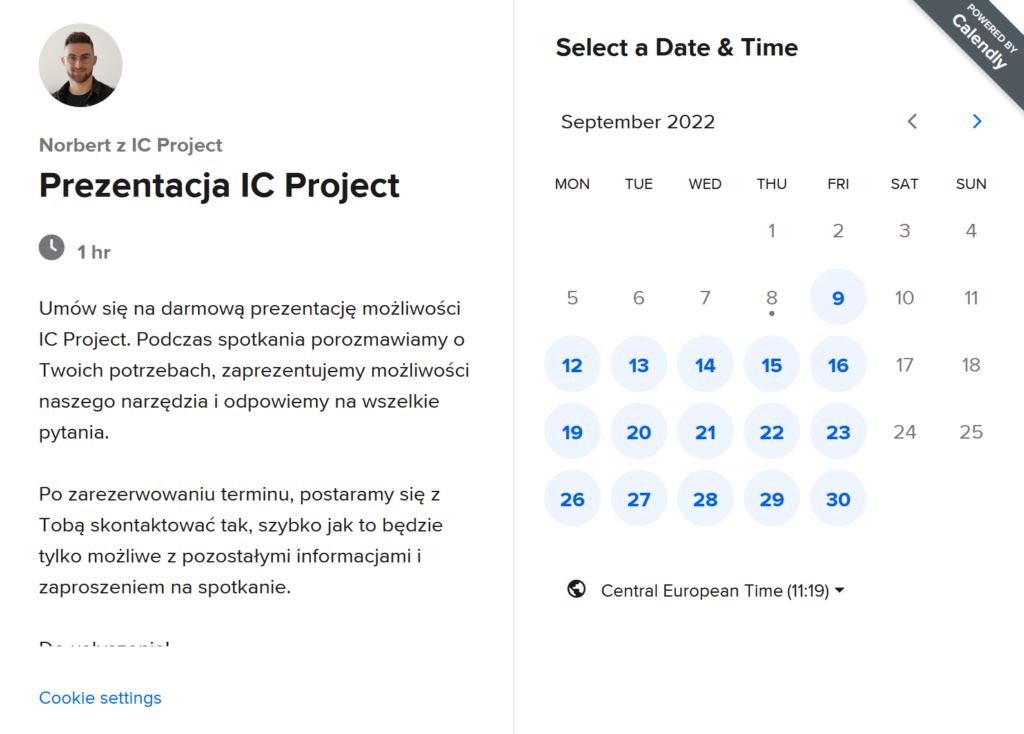With the development of technology and the globalisation of markets, more and more companies are choosing to work in a remote model. Remote project teams are becoming increasingly popular because they allow for flexibility, time and cost savings, and attracting the best talent from all corners of the world. However, running projects with such teams can be challenging for managers and leaders. In this article, we will discuss some key principles that will help you run remote projects effectively.
What are remote project teams?
However, let’s start with the basics. Let’s define what a team is, and what distinguishes a remote team, otherwise known as a distributed team. A team is a group of people who work together to achieve a common goal or accomplish specific tasks. A key feature of a team is synergy – working together and collaborating allows for better results than if each person acted individually. A team can consist of a few or many members, depending on the size and complexity of the project, task or organisation with which it is associated. How does this relate to a distributed team?
A remote team, also known as a distributed team, differs from a traditional team by the fact that its members don’t physically work together in one place, but are spread over different geographical areas, often in different cities, countries or even continents. To better illustrate the situation, let us delineate some key characteristics worth attributing to a distributed team. So what are the characteristics?
- Physical distance. Remote team members don’t have physical contact, they don’t work in the same office or on the same location. Communication is mainly through communication tools such as emails, chats, video-conferencing, which can affect the dynamics of relationships within the team.
- Virtual communication. Remote teams rely on technology to maintain continuous communication between team members. Effective and regular online communication is crucial to the success of a project, as a lack of face-to-face contact can lead to delays, misunderstandings and communication problems.
- Flexibility of working hours. Remote teams often operate in different time zones, which means that members may have different working hours. This can be beneficial as teams can work 24/7 using different time zones, allowing the project to progress more quickly.
- Cultural diversity. Remote teams can bring together members from different cultures, languages and habits. This can bring benefits such as diversity of perspectives and creativity, but it also requires an understanding and respect for cultural differences.
- Use of technology. The remote team relies on the appropriate tools and technologies, such as project management tools, collaboration platforms, video conferencing, email, etc. The choice is wide.
A distributed team presents a lot of challenges, but also a lot of benefits, such as access to global talent, work flexibility and reduced office costs. The key to a successful remote team is proper management, good communication and using the right technology tools. So how do you run projects in distributed teams? Let us analyse the topic step by step and in maximum detail.
What challenges does the remote team face?
There are many challenges, although the key challenge is above all distance, which can ultimately generate a lot of additional problems. Very often, each team member is separated by hundreds, sometimes even thousands of kilometres. This affects communication and cooperation, which can be quite endangered.
Distributed teams work in the same way as traditional teams, but have difficulty contacting each other. And this is what causes the biggest challenges with remote teams. Face-to-face communication is hard here, where we can communicate instantly and also see the reaction of a teammate. In traditional teams, it is often during breaks, lunches or informal meetings that there is an informal exchange of ideas, establishing relations and building bonds between team members. In remote teams, such opportunities may be limited, which affects the dynamics and atmosphere of the work. The situation is identical with non-verbal communication. How many times have we seen a face or a nod that says more than 1000 words? That’s right, and when communicating remotely, these aspects are very hard to catch. You have to manage differently.
With all of this, we need to remember that distributed teams need to coordinate their activities, which can be more difficult when members work on different time zones. Synchronising work, especially in projects that depend on the collaboration of many people, can be complicated and requires careful work planning. As you can see, the challenges are many, and these are just some of them. However, let’s focus on the most important aspects and offer dedicated solutions to make distributed working effective.
Communication in a remote project team
Effective communication in a remote project team plays a key role in achieving success. Emotions, communication and the exchange of certain information are important in project management. When looking at the differences between remote teams and traditional teams, we see that one of the key issues is communication within the team. To build on practice rather than theory. We have built in some key principles that should be taken into account to ensure proper communication in a remote project team. You can also think of this as a kind of action plan in building distributed communication.
1. Identify communication tools
Choose the appropriate communication tools for different purposes. These can be video conferencing tools such as Zoom or Microsoft Teams, live communication tools such as Slack or Messenger, although by far the best way to bring everything together is through a project management programme with built-in messaging. This type of programme is IC Project, which will provide a project management platform with all communication in one place.
2. Set communication standards.
Set rules on response times to messages, meeting schedules and responses to emails. Also set guidelines for sharing information and using different communication channels. Remember that when you have a multicultural team, a language standard is very important. Don’t allow communication in a few languages, and build a global language of communication for the whole team or even the organisation.
3. Schedule regular meetings.
Hold regular online team meetings to discuss project progress, set goals and assign tasks. These meetings should be interactive and everyone should have a chance to speak and ask questions. Try to plan these types of meetings in advance. We recommend a so-called daily meeting, which is a specific daily meeting at a fixed time. Everyone meets and discusses the important things.
4. Build open and clear communication.
Encourage open and clear communication within the team. Establish an atmosphere where members feel free to express their opinions, share ideas and raise concerns. Direct feedback is very important in any company – try to introduce this type of principle in your communication.
5. Document communication and important arrangements.
It is important to document communications, such as meeting discussions or arrangements. This ensures that all team members have access to important information and that decisions made earlier can be revisited more easily. A suitable communication or project tool will create the documentation automatically.
6. Take account of time differences.
If the team works in different time zones, try to take this into account when planning meetings and communications so that everyone has a chance to participate. It is also worth returning to the point about communication norms at this point, as with different time zones the rules for responding to certain messages can be important.
Remember that communication in a remote project team is an ongoing process. Taking care of it from the very beginning of the project and regularly monitoring its effectiveness help to keep the team working in harmony and effectively. We hope that by keeping an eye on the above points, communication in your distributed team will enter a different, and definitely higher, level. It really can work.
The role of technology in remote project teams
Technology plays a key role in remote project teams, enabling effective communication, collaboration, monitoring project progress and facilitating remote working. Technology is often what brings a remote team together. Of course, a variety of tools are used for this purpose, ranging from project management software to specialised instant messaging, cloud drives or even specialised timekeeping tools. The possibilities are numerous.
Let’s start with project management software, which is the main platform for all remote project teams. It is in this software that every team member has their project, tasks, documents or communications. It is the one common place that is the heart of the project. These types of solutions can be a great solution for the day-to-day work that the team uses, but also for the managers. Keep in mind that a distributed team also means greater challenges for the project manager, who has to ensure proper rules and sometimes even more robust control of the work. A comprehensive project management programme such as IC Project can be an excellent technological choice.
We have already mentioned some solutions to communicate better. These days, remote teams have nothing to look for without video conferencing software like Zoom or MS Teams. It’s a meeting place. We click on a link, we talk, we discuss important topics, and in the process we also see each other. It seems that in this day and age, there’s not a move without this type of solution, and this is made possible by current technology.
In recent times, all kinds of tools that allow us to work better as a team, for example on our own ideas, mind maps or team discussions, have gained in value. This is particularly true of Miro or Mural, virtual whiteboards where we can outline, write down or simply construct our thoughts and ideas. These are great tools that allow the team to work remotely and, at the same time, draw out their own creativity and build up a full documentation of this.
Of course, let’s remember all the files and documents, because who can imagine working these days without cloud storage such as One Drive, Google Drive or iCloud? It seems to be a total essential for our lives and also for working in distributed teams. In project work, it is extremely important to have access to project documentation. This we can get through the project management software, but also the cloud storage, which is either a separate or integral part of our project management in the software.
Technology is an indispensable tool that enables remote project teams to work effectively, improving communication, collaboration, efficiency and project outcomes. The possibilities are many, although we have tried to focus on the most important aspects. Remember also the new tools built on artificial intelligence, which may prove interesting in specific projects.
Leadership, motivation and inspiration in remote project teams – why is it so important?
Work culture for any remote project team is extremely important. A conscious team is very often able to work on the organisational culture on a regular basis, although there must always be a manager, i.e. a leader of the whole team, above everything. Keeping everything in check, making key decisions, overseeing the work, and the flow of that work – these are the key tasks for any project manager on a remote project team.
In theory, we can distinguish self-managing teams, but these are strongly conscious and rare formations. It usually takes a long way to get to that stage, and even that does not guarantee a positive outcome. The captain of the ship in question is needed, sometimes even in mundane situations. It is simply about a person who has decision-making power and uses that decision-making power at important moments.
An example? Here you are… Any remote meeting can sometimes go on for hours… how many times do we deviate from a specific topic, talking around, with no direction or punchline for the meeting. The role of the manager in this example is to moderate the meeting in relation to the subject matter, to oversee its duration, to write down some assumptions and arrangements. We have plenty of situations like this, and a dispersed team intensifies the level of management.
Leadership in remote project teams, affects at least:
- setting goals and verifying their execution
- maintaining ongoing communication and organisational culture
- managing time and resources of the team
- planning work, catching dependencies, delegating tasks
- motivating and inspiring
That’s right, motivating and inspiring. Remote project teams have it (as we already know very well!) that we don’t see each other face-to-face. Sometimes we don’t see problems, we go in the opposite direction, and the positive reaction is not at all the obvious one. And this is because we lack clarity on the topic. Non-verbal communication is often gold in team management, but when working remotely it is almost non-existent.
The role of any manager in a distributed team is to motivate and inspire their team. So how can a leader motivate their team? What is worth keeping an eye on?
1. Maintain a positive atmosphere.
Team atmosphere is the key to success. Every remote meeting can be a pleasure and that moment of the day when an employee arrives with a smile on their face. It’s worth having a laugh sometimes, telling a joke, listening to another person or stepping away from company duties in general to talk a moment about real-life situations. Of course, taking care of the atmosphere is a very broad subject and the point itself is quite general, while the next point will be what can positively influence this atmosphere.
2. Integrate the team.
Integration in a remote form is feasible. The better we get to know each other, the more we know about each other, the better the team functions. If you have a multicultural team, you can use this aspect to integrate on the basis of learning about cultural differences. If you want to sit down for a beer in the afternoon as a team, do it and come up with interesting games. The web is full of many ideas that you can use to integrate your remote team effectively.
3. Encourage to open communication.
The worst thing that your distracted team can manifest is closed communication. You will never get to know the problems, the roadblocks at work, or the real feedback. Without non-verbal communication, you need to ensure open communication and build a form of direct feedback. Try to talk about it, encourage it, show examples in practice.
4. Motivate, because remote working can burn you out.
Remote working is great, but it has as many fans as enemies. Many people don’t like to sit in one place, they like to talk to others or change their environment. A person who is used to working remotely can burn out very easily and may simply lack motivation at some stage. Therefore, it is important to keep this aspect in mind in order to provide ongoing motivation, e.g. through goals to be achieved. We recommend an article where we provide ways to motivate employees.







